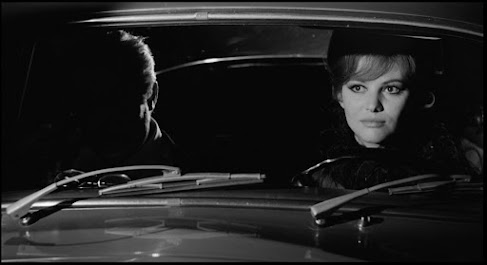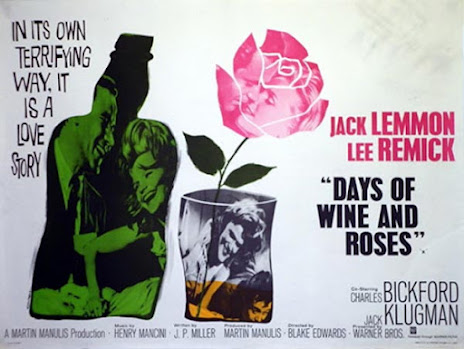"All the confusion of my life... has been a reflection of myself! Myself as I am, not as I'd like to be."
-Guido Anselmi
8½, 1963
Director: Federico Fellini
Writers: Fellini, Ennio Flaiano, Tullio Pinelli, Brunello Rondi
Cinematographer:
Music: Nino Rota
Producer: Gianni di Venanzo
Starring: Marcello Mastroianni, Claudia Cardinale, Anouk Aimee, Sandra Milo
Why I chose it
I have made multiple attempts to watch this classic of Italian cinema, but for various reasons that I believe are completely unrelated to the quality or watchability of the film, like the film's protagonist, I couldn't complete it. Here was a golden opportunity.
'No-spoiler' plot overview
Popular and celebrated film director Guido Anselmi (Mastroianni) is trying to make a new movie. While on the verge of commencing shooting, he can't seem to finalize the script and faces increasing pressure from his producers, actors, and the press. At the same time, he takes a working vacation in a sumptuous spa, but cannot escape his own personal stresses. He juggles dysfunctional relationships with various women, most notably his wife and (primary?) mistress. To cope with what seems an increasingly vague line between the film's script and his own life, he retreats into fantasies and visions of his past.
 |
| Mastroianni as Guido looks in the mirror and is not happy with what he sees. |
Production Background
I've discovered there are books written about the making of this film, multiple interviews with cast and crew, and commentaries by eyewitnesses. So here are just a few tidbits that I picked up as I dipped into the tip of the proverbial iceberg. First, it's true that director Fellini wrote into the script much of his own life's memories and his struggles as a famed director on the way up. In fact, the title refers to the total number of films Fellini had made at the conclusion of production of this one. Yet unlike Guido, Fellini was a more confident director, and the film is widely believed to be only semi-autobiographical. In fact, Fellini described the film as portraying "three levels of which our minds live: past, present, and conditional (fantasy)." But he apparently struggled with the tone of the film, as he had a note taped to his camera, which read, "remember, this film is a comedy."
 |
| Fellini (left) on the set of 8 1/2 with Mastroianni. |
At what was probably the apex of his career, Fellini apparently had a great gift for being the center of gravity on set such that everyone orbited around him or wanted to be close to him. Actress Sandra Milo (Carla) confesses to having intense feelings for Fellini.
Fellini was obsessed with actors' physical characteristics and made casting choices accordingly. The American singer Eddra Gale, who had never acted in a film, was cast as Saraghina because her voluptuous body had just the right look. But with the exception of megastar Marcello Mastroianni, no other actor in the film was hired more than twice by Fellini in his long career.
8½ wowed the critics around the world and was a big hit in the U.S. as well. It went on to win the Oscar for best foreign-language film. As an important piece of film history, the film is lauded especially by directors today who see it as being an authentic portrayal of the struggles of film-making.
Some other notable film-related events in 1963 (from Filmsite.org):
- Elizabeth Taylor was the first actress to sign and be paid a record $1 million for a film, for her lead role in the legendary epic film Cleopatra (1963) from 20th Century Fox.
- Ampex, which had developed the world's first practical videotape recorder in 1956 for TV studios, began to offer its first consumer version of a videotape recorder, sold through the Neiman-Marcus Christmas catalog for $30,000 - a non-consumer-friendly price.
- Director Tony Richardson's Best Picture-winning UK film, a period comedy titled Tom Jones (1963), was noted for its many freewheeling cinematic tricks (a slapstick mock-silent prologue with inter-titles, quick edits, stop-motion, freeze-frames, wipe-cuts, sped-up motion, audience asides, and breaking of the fourth wall, tongue-in-cheek narration), and the eating scene that cross-cuts between roguish Tom Jones (Albert Finney) and Mrs. Waters (Joyce Redman).
- Sidney Poitier won the Best Actor Academy Award (awarded in 1964) for Lilies of the Field (1963), thereby becoming the first Black actor to win this award for a leading role, and the only one in the 20th century.
- On first viewing, I found the film fascinating but frustrating, and I even stopped periodically to check to see how much time was left. I liked it better the second time with the commentary track running. Its scenes are consistently odd, and they are linked together with the slimmest of plots. Those with obvious surrealism blend into others that may also be surreal, but can we be sure of anything that's happening? I would compare this in an odd way to some of David Lynch's work. No doubt that 8½ has riches to be uncovered, with views on identity crises, the vagaries of fame, traditional and modern gender relationships, religion and superstition, to name the most obvious, but to have any hope of decoding those messages, you'll need to commit to multiple viewings.

In a possible fantasy, Guido and his wife dance as all his players
parade in a circle on his location set. - I don't mind surrealism, as my commentary on another Italian film with surreal elements, Miracolo a Milano (1951), will attest. In fact, the scene in which Guido flies high into the sky to then be pulled back down reminded me of the broomstick riders taking off into the sky near the Duomo in the earlier film. Another film that I absolutely adored, also with some surreal and spooky visuals but a clearer plot through-line, is Ingmar Bergman's Wild Strawberries (1957).
Guido flies into the air. 
A very creepy surreal scene at the film's beginning. - Despite everything, I will say that the visuals grab you with their brilliance, whether it's the lighting, the costumes, or how the camera captures the revealing expressions of the actors. Here are just a few snaps:

From a childhood memory of Guido's, an old woman in her house. 
The spectacular spaceship launchpad set at night. 
Claudia Cardinale shares the frame with Mastroianni, but we
never see both their faces at the same time.
A strange scene in a cafe. Carla, in her furs, is the center of attention. - This week's Bit Player Bingo features the French actress who I didn't realize had a career outside of her brief but memorable role as the patriot in Casablanca (1942) who shouts "vive la France!" at the end of a rousing rendition of the Marseillaise: Madeleine Lebeau. To be fair, her role in 8 1/2 (as a French actress!) is arguably more than a bit part, but she has a totally different manner here.

Madeleine Lebeau (right) as actress Madeleine pumps Guido (Mastroianni)
for info about her part in his film.
Lebeau in her memorable scene in Casablanca.
The film has been released on DVD by the Criterion Collection, and is currently streaming for subscribers of their online channel. It's also available for free now for subscribers of HBO Max, Kanopy, and Direct TV. It can be streamed for a small fee on other services as well.
Further Reading
Go here for a detailed discussion of the film background as well as interviews with Fellini and Mastroianni.









